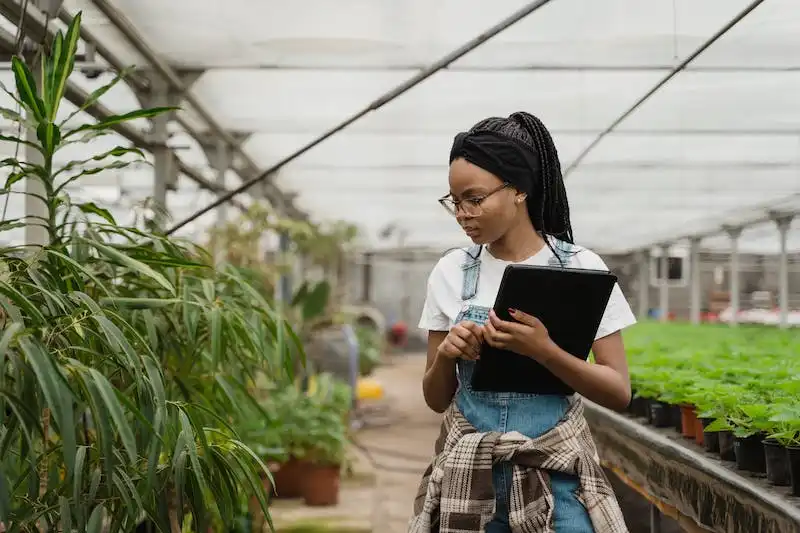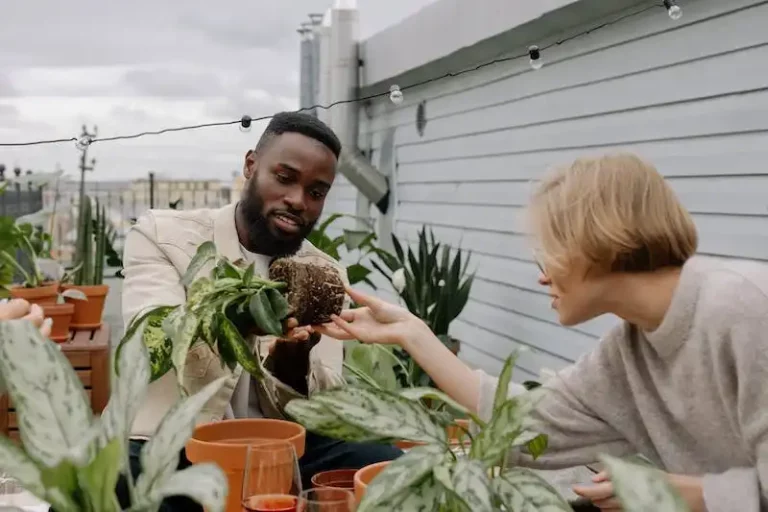Bees tend to be more than just annoying pests buzzing around our picnics; they play a vital role in our ecosystem. These amazing creatures are responsible for pollinating more than 80% of flowering plants and crops, including some of our favorite fruits and vegetables like strawberries and kaleidoscope of wildflowers.
But bees are facing numerous challenges that threaten their survival, including habitat loss, pesticide use, and lack of food sources. As gardeners, we can make a difference by creating pollinator-friendly habitats and providing them with the essentials they need to thrive.
One of the first steps is to supply bees with a variety of plants that bloom at different times throughout the year. This ensures there is a constant source of nectar and pollen to sustain them through all stages of their life cycle. Some good choices for bee-friendly plants include yarrow, milkweed, and sunflowers.
Additionally, leaving some bare ground in your garden can provide nesting space for ground-nesting bees. Many species of bees are solitary and nest in the ground, using small holes that they drill themselves. By providing them with this space, you are helping to support their populations and create a more balanced ecosystem.
Avoid using pesticides in your garden, as they can harm bees and other beneficial insects. Instead, try using companion planting methods and natural pest control techniques to manage pests. For example, planting marigolds near your vegetables can deter aphids, while attracting beneficial insects like ladybugs.
Remember, attracting bees to your garden isn’t just about creating a beautiful space; it’s about helping these important pollinators and doing our part to benefit the world around us. By providing them with the essentials they need to live and thrive, we can contribute to the health of our ecosystem and ensure a brighter future for all.
“Bees have a lot to teach us about how to live in harmony with nature. If we were to take a moment to appreciate the intricate dance of these winged creatures, we would realize that there is so much more to them than meets the eye.” – The Almanac of Backyard Beekeeping
How to Attract Bees to Your Garden Easy Tips for a Buzzing Backyard
Attracting bees to your garden is not only an attractive addition to your outdoor space, but also a vital step in helping to support bee populations. Bees play a crucial role in pollinating plants, which helps plants reproduce and produce the food we rely on. By creating an attractive environment for bees, you’re not only helping them survive, but also benefiting your own garden.
Here are some easy tips to attract bees to your backyard:
1. Plant a variety of flowers: Bees are attracted to a wide range of flowers, so planting a variety of species will help attract different types of bees. Plant flowers in clumps to mimic natural growth, and include both native and non-native varieties to ensure a constant supply of nectar and pollen.
2. Provide water sources: Bees need a water source, especially during hot summer months. To create a bee-friendly watering hole, place a shallow container filled with water somewhere in your garden. Adding rocks or floating plants will also help bees safely drink without drowning.
3. Create nesting areas: Bees need a place to nest and raise their young. Providing nesting sites can be as simple as leaving some areas of bare ground or adding bee boxes or gourds with holes drilled into them. This gives bees a safe space to lay their eggs and continue their life cycle.
4. Plant food plants: Bees need a regular supply of food, so planting bee-friendly food plants is essential. Include plants like sunflowers, strawberries, and squash that produce abundant nectar and pollen. By having a variety of flowering plants, bees will have a continuous food source throughout the seasons.
5. Limit pesticide use: Pesticides can be harmful to bees and other pollinators. Limit the use of pesticides in your garden, or opt for organic and bee-friendly alternatives. This will ensure the bees you attract can safely forage and pollinate without being harmed.
6. Hang hollow logs or bee hotels: Some bee species prefer nesting in hollow logs or bee hotels. These can easily be created by drilling holes of various sizes in a wooden block or bundling hollow canes together. Hang these in a sunny spot in your garden to attract bees looking for a nesting place.
By following these easy tips, you’ll create an inviting environment that will attract bees to your garden. Remember, the key is to provide bees with food, water, and nesting opportunities, which are essential for their survival. You’ll not only have a buzzing backyard but also contribute to the overall health of bee populations.
1 Plant a Variety of Flowers
When it comes to attracting bees to your garden, one of the easiest and most effective ways is to plant a variety of flowers. Bees are attracted to a wide range of flower colors, shapes, and fragrances. By planting a diverse selection of flowers, you will increase the chances of attracting different types of bees.
There are many types of flowers that bees find irresistible. Some popular choices include sunflowers, lavender, coneflowers, dahlias, and zinnias. You can also plant native wildflowers, which are particularly attractive to bees. Additionally, consider including flowers with different bloom times, so there’s always something in your garden to offer the bees.
When arranging your garden, think about creating clumps of flowers rather than planting them in a single row. Bees are more likely to visit clusters of flowers, as they provide a larger and more concentrated source of nectar and pollen. This will increase your chances of attracting bees and other pollinators.
Another important factor to consider is the type of flowers you choose. Be sure to select flowers that are known to be pollinator-friendly. Avoid using agricultural chemicals, including pesticides and herbicides, as they can be harmful to bees. Instead, opt for organic gardening methods and natural pest control alternatives to maintain a bee-friendly garden.
Bees also prefer flowers that are easy to access. Look for flowers with a simple and open structure, with petals that are easy for bees to land on and collect nectar from. Flowers with long, tubular shapes like honeysuckle are particularly attractive to bees.
In addition to nectar, bees also need sources of water. Consider providing a water source in your garden, such as a shallow dish or birdbath. Just be sure to place some floating objects, like stones or twigs, in the water to prevent the bees from drowning.
By planting a variety of flowers in your garden, you’ll not only attract bees, but also other beneficial insects. This creates a healthy and diverse habitat that can help support your plants and vegetables. Plus, you’ll be doing your part to help bees, which play a vital role in pollinating our food crops and maintaining the balance of our ecosystems.
So, get out there and start planting a kaleidoscope of bee-friendly flowers. The bees will thank you, and you’ll enjoy a beautiful and buzzing garden!
2 Create a Water Source
To attract and support bees in your garden, it’s important to provide them with a water source. While bees mainly visit flowers to collect nectar and pollen, they also need water for hydration and to cool down their hives. By creating a water source, you can help ensure that bees have everything they need to thrive.
When creating a water source for bees, it’s essential to keep in mind their unique requirements. Bees prefer shallow water, so a simple birdbath or shallow dish filled with water will work perfectly. Just make sure to add rocks or sticks to the water so that the bees have a place to land and sip the water safely.
Bees are also attracted to moving water, as it helps them locate it more easily. You can achieve this by placing a small water pump or fountain in the water source. This will create a gentle rippling effect that will catch the bees’ attention and make it easier for them to spot the water.
It’s important to note that bees are not strong swimmers, and many can easily drown in deep water. To avoid this, make sure your water source is shallow and that there aren’t any areas where the bees could get trapped. It’s also recommended to place some kind of float or cork in the water source, which will give the bees a landing platform and a way to climb out if needed.
When setting up your water source, choose a sunny location in your garden that is protected from strong winds. Bees prefer warm water, so placing the water source in a sunny spot will encourage them to visit. Additionally, positioning the water source near flowers or other attractive plants will make it more convenient for the bees to access both water and food in one spot.
Remember to regularly clean and refill the water source to ensure it stays fresh for the bees. Bees have a keen sense of smell, and if the water becomes dirty or contaminated, they may avoid it. Also, avoid using any pesticides or chemicals around the water source, as these can be harmful to bees and other pollinators.
Creating a water source for bees not only benefits the bees themselves, but it also helps to attract a variety of other pollinators to your backyard. By providing a reliable and accessible water source, you’re creating a welcoming habitat that supports the entire ecosystem. So go ahead and install a water source in your garden, sit back, and enjoy the buzzing activity that will surely follow!
3 Plant Herbs
Planting herbs in your garden is a great way to attract bees. Bees are attracted to the variety of flowers that herbs provide, and they love to collect nectar and pollen from them. Herbs are also a great way to add beauty and fragrance to your garden.
When planting herbs, there are a few things to keep in mind. First, choose herbs that thrive in the sun, as bees love warm and sunny places. Some popular herbs that bees are attracted to include thyme, lavender, and rosemary.
Secondly, it’s important to provide organic herbs for the bees. Bees are attracted to organic flowers because they provide a more natural and chemical-free food source. Avoid using pesticides or herbicides in your garden, as these can harm bees and other pollinators.
Finally, consider creating bee-friendly habitats in your garden. Bees need places to nest, so providing them with shelters like bee hotels or nesting boxes can be beneficial. You can also leave areas of your garden undisturbed, as bees often create nests in brush piles, old plant stems, or other natural cavities.
By planting herbs in your garden, you’ll create a beautiful and bee-friendly space that attracts these important pollinators. Plus, you’ll have fresh herbs to use in your cooking and enjoy the many benefits they provide.




